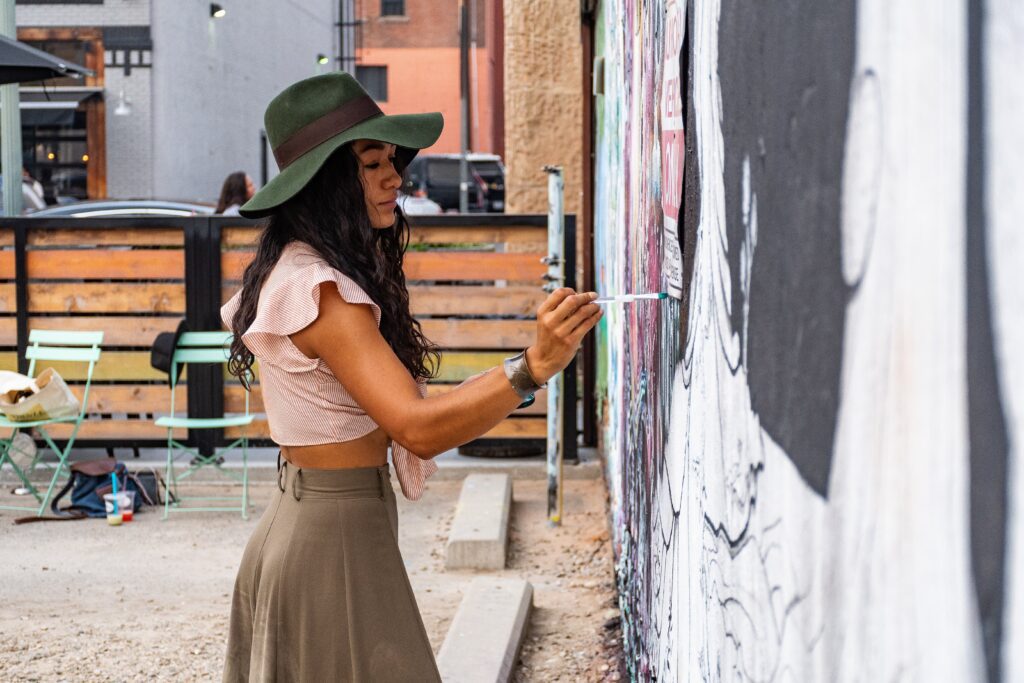Hi. I’m Molly, I’m an artist, and I have only recently learned how to cope with rejection.
Let me rephrase: I’m Molly, I’m an artist, I am constantly learning new skills to help me cope with rejection, and I expect to be working on this for my entire life.
When you’re an artist, rejection is just part of the landscape, but that doesn’t make it easy. Maybe you’re a painter, and you have an art show but no one buys anything. Maybe you’re an author, and you have to go through the grueling process of first querying agents and then going on submission to publishers (ask me about my 100+ agent rejections… or maybe don’t.) Perhaps you’re a filmmaker, and you aren’t getting into the film festivals you had your heart set on. Maybe you’re a photographer and your mom just… doesn’t get your art. Regardless of your medium, being a creative person means you are going to deal with rejection at some point. More realistically, you’re going to deal with it constantly throughout your entire career.

Like many artists, I’m a sensitive person. I pour myself into my art, and I take it extremely seriously. I’m going to go out on a limb and guess that you do the same. I’m probably more sensitive than a lot of people–I have a whopping eight water placements, iykyk–but I think it holds true that when you care a lot about your art and you put a lot into it, rejection and criticism can be hard to deal with. I could tell you a million stories about people who overcame tons of rejection to create a successful career in the arts for themselves, but that’s been done before. What I’m going to do instead is give you a tool kit that will hopefully help you find ways to weather the hurricane of rejection and criticism that comes with putting your art out into the world.
Step one: determine who your audience actually is
It may seem strange, but the first step in dealing with rejection is understanding who specifically you are making this art for. All creatives understand that their work isn’t going to be for everyone, but many of us really, really want it to be. So let’s get specific about who you’re creating this thing for. For example, I’m an author, and I write Young Adult and Middle Grade books. So, obviously, I want to appeal to young people. Getting even more specific, I write creepy, spooky books, so my audience is mostly composed of horror fans. Even more specifically, I write queer stories, which as we know are for everyone, but I really want queer readers to connect with my work. So for my writing, my audience is young, queer horror lovers. It doesn’t matter if other people–be it my mom or my former writing professor or the dozens of literary agents I queried before I signed with my agent–like the book or not. It’s not for them.
Take the time to write down who, specifically, you make art for. Include as many details as possible. Writers are encouraged to think of their “ideal reader;” that is, the one single person that you want to connect with your work. If you are able to get that specific and narrow your audience down to one single person who you are creating for, that’s amazing. Who is the one person you want to show your movie to? Who is the one person who you want to hang your art on their walls? If your audience is more broad, that’s fine, but be as detailed as you possibly can.

Step two: develop a mantra
I know this seems a little silly, but bear with me. When you’re heading into any situation where you might be facing rejection–be it an art school critique or even just checking your email to see if you got into Sundance–come equipped with a mantra you can repeat to yourself. There have been studies about the power of speaking words out loud to yourself, but even if you just say it in your head, it may be helpful. This does two things: it can be soothing and affirming, but it also can slowly switch your mindset around rejection. Here are some examples of mantras that might work for you:
My work is not for everyone, but that does not decrease its value.
I create art that I’m proud of.
I accept criticism without becoming defensive.
This opportunity was not right for me, but others are coming my way.
These are all just examples; you’ll have to workshop the right mantra for you. Whatever it is, it should be something that helps you shift your mindset and calms your nerves when you experience rejection.
Step three: get a little treat
At New 32, we’re big fans of getting a little treat. Sometimes that 3:00 latte from my favorite local coffee shop is all that gets me through my day. If that sounds dramatic, that’s because it is, but it’s also true.
When my novel went on submission to publishers for the first time, I was excited, but I was also anxious about how I was going to cope with the sudden influx of rejections. A wise friend suggested that I plan to get a treat every time I received a “no.” Amazingly, it worked. When I got a pass from a publisher, I immediately start ed thinking about what my treat would be. I’ve gotten some cool stuff this way: my favorite delicious (but pricey) chili crisp, for starters, and the ultimate autumnal plaid pants. Your treats don’t have to be as expensive as mine, or even cost anything at all; it could be as simple as a cup of coffee, freshly-baked cookies, or even ditching your responsibilities to go on a nice walk.
Regardless of what your little treat is, it can help retrain your brain to actually look forward to rejections a little bit. And even if it doesn’t, you’ll be sad with a treat, which is way better than being sad without one.

Step four: practice self care
I’ve written many, many times about the importance of practicing self-care as an artist. I’ll reiterate what I’ve said before here: our culture sells us a very specific, capitalist version of self care. Hell, in the paragraph before this one, even I was urging you to go get a little treat (and tbh, I stand by that advice.) But self care doesn’t mean you have to run out and buy a bath bomb, or an expensive face cream, or pay for a massage. I mean, if those things energize you and feed your soul, I totally want you to do that. I just want you to unlearn the idea that self care inherently means spending money. Self care can mean spending time connecting with friends and family, it can mean making sure you drink enough water throughout the day, it can mean taking your medication, it can mean going to the gym, it can mean wearing an outfit that makes you feel like a badass. There are so, so many things that self care can be, and I want you to really lean into the things that make you feel good. For me, it’s keeping my house clean (ugh), eating nutritious, delicious food, moving my body in whatever way is currently calling to me, and spending time with the people I love. Have a think and decide what helps you feel more like a person and less like a trash goblin (totally not projecting here) and then do those things. I know it’s simple, but the better you feel over all, the easier it will be to receive rejection and criticism.
Step five: grow from it
I know this one is annoying, and it’s okay if you’re mad at me about it. However, I have had luck reframing rejection as an opportunity for growth, learning, and curiosity. Maybe someone I really love didn’t connect with my newest film. When that happens, I have the opportunity to really think about that. I can consider if I think their critique is valid; being honest with yourself about that type of thing is hard, but so important. I can think about what didn’t work for them specifically and try to figure out how my next project can be even better.
Or maybe you didn’t get into a festival you were really excited about. It’s a rejection, sure, but you can also see it as an invitation to get curious. Was this festival actually the right fit for your film? Are these your people? If the answer is yes, how do you improve your work so that your next film is accepted? If the answer is no, what opportunities do you have to connect with people who really get what you’re trying to do with your art? Can you think of other festivals that might be a better fit, other filmmakers in your community you could meet up with, or even people on the internet who might really love what you’re creating?
I’m sure there are countless other ways to handle rejection and develop artistic resilience. These are just a few of the things that have helped me in my journey to be less driven by my emotions when I’m facing rejection or criticism. Before you go, I want to affirm that this art thing is really, really hard, and it’s totally okay and normal if rejection gets you down. Your goal shouldn’t be to feel 100% calm and happy when you receive bad news or a hurtful critique, although if that’s where you’re at, more power to you. My personal goal is to simply have enough tools in my toolbox that rejection, even when it gets me down, doesn’t keep me down, and that it never, ever stops me from making my art and putting it out into the world.

Leave a Reply